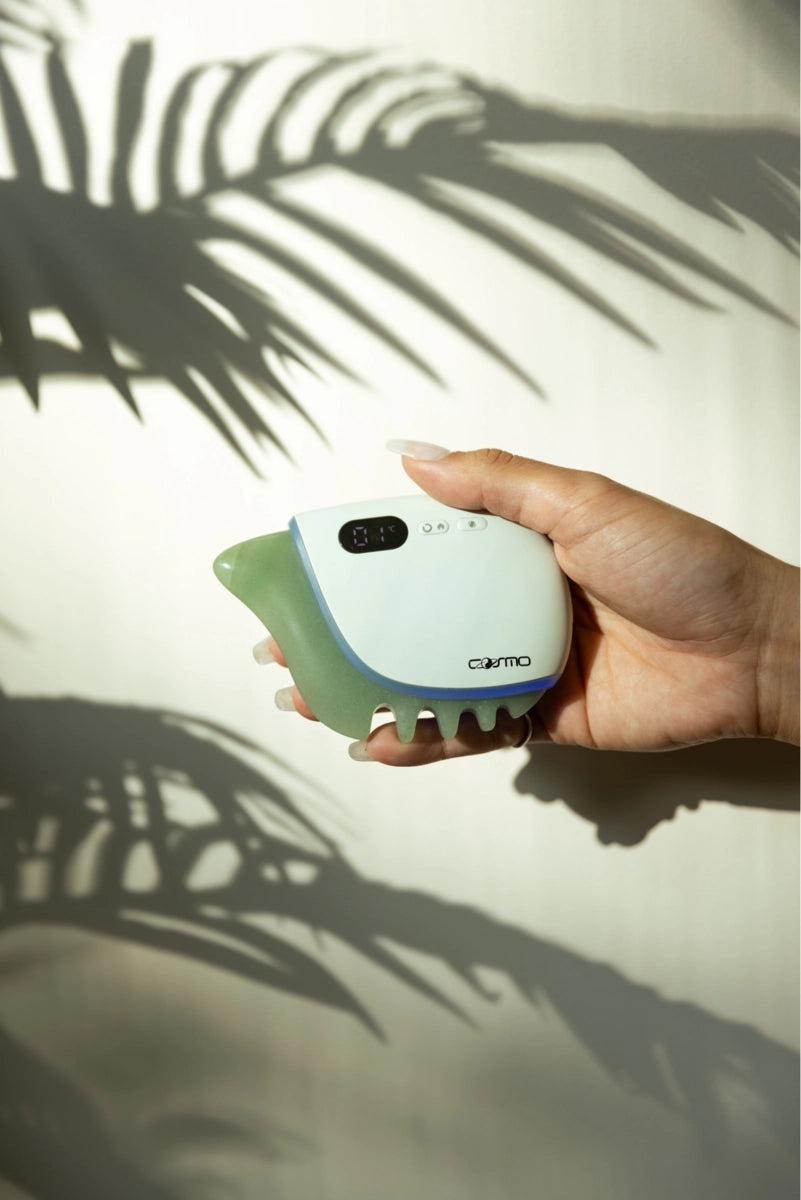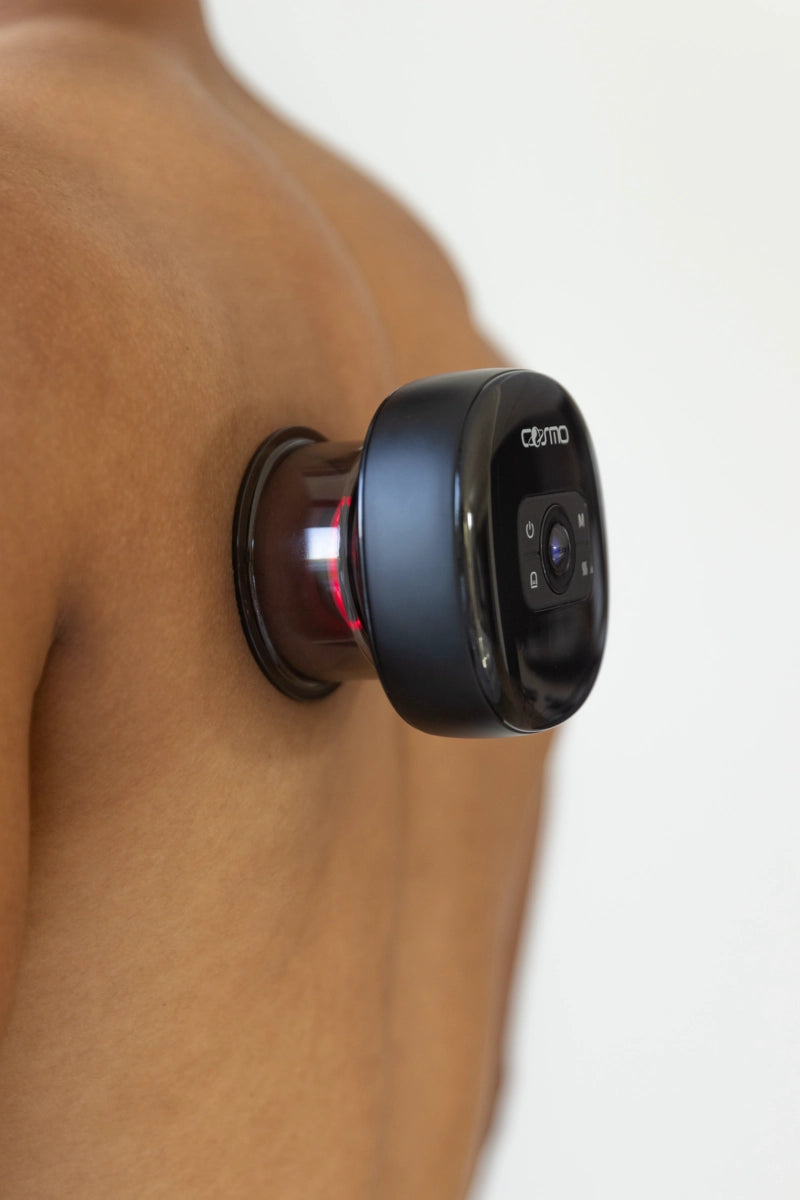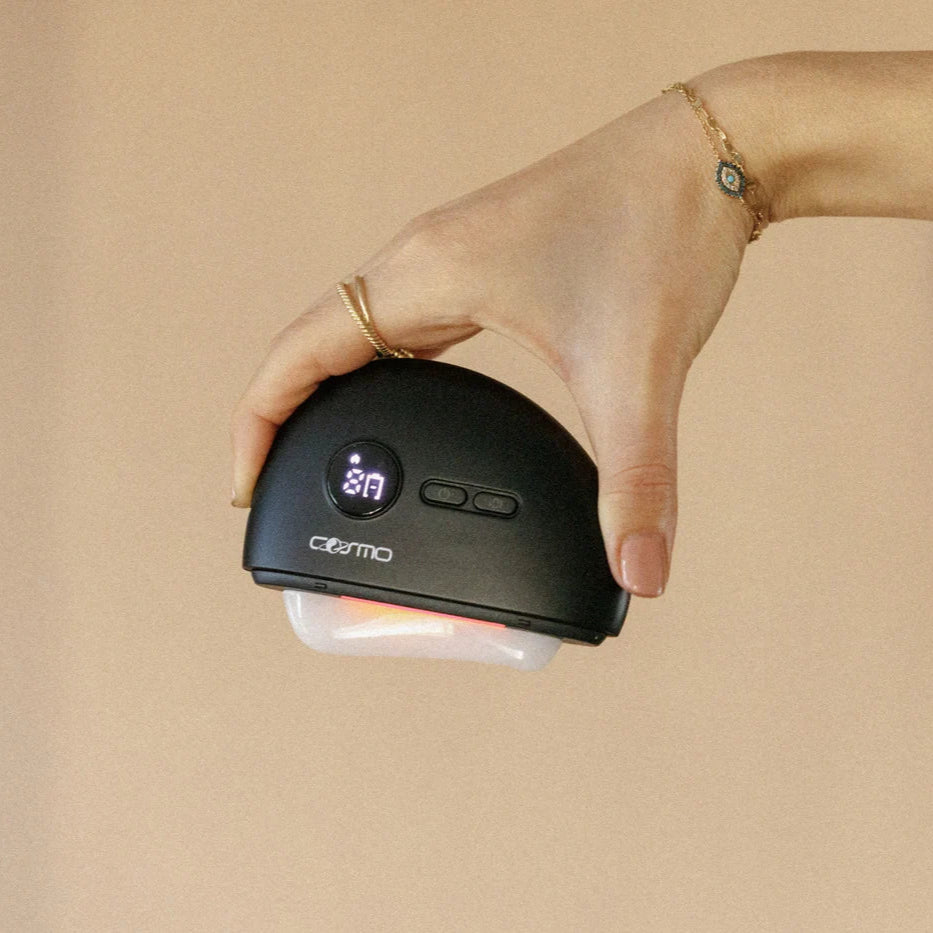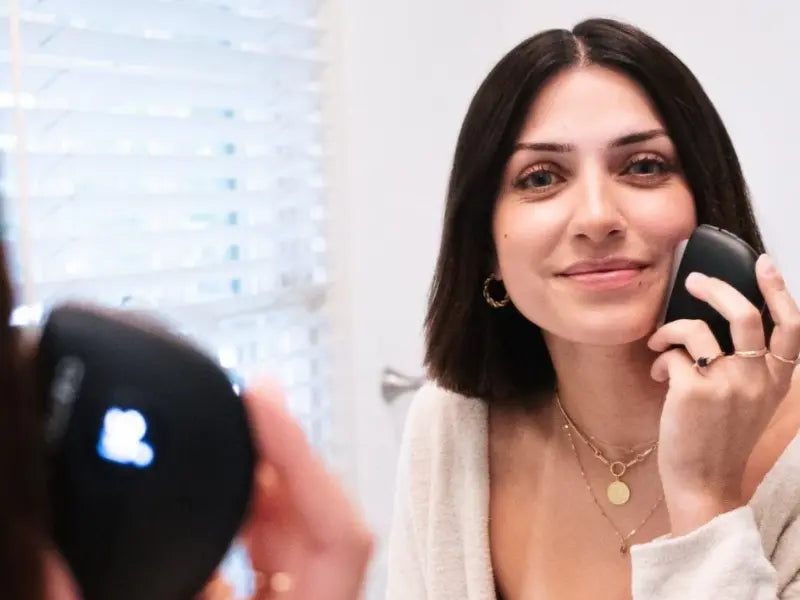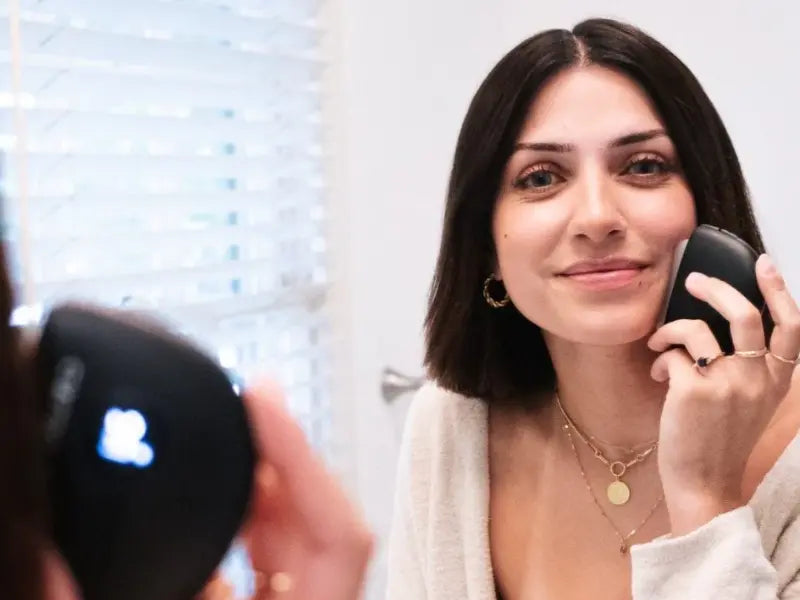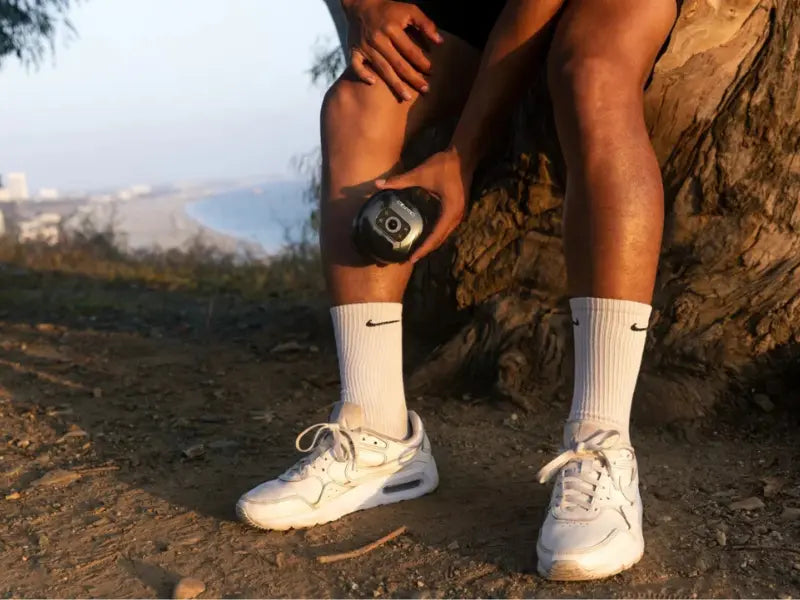Gua Sha is a traditional East Asian therapy that has gained modern popularity for its remarkable effects on microcirculation – the flow of blood through the smallest vessels in the skin and tissues. By using a smooth-edged tool to scrape the skin gently, Gua Sha can dramatically increase local blood flow. Clinical studies have shown that this technique can boost surface circulation by up to 400% immediately after treatment. The result is a surge of nourishing blood to the targeted area, helping to deliver oxygen and nutrients while removing metabolic waste. In this article, we explore how Gua Sha works to improve microcirculation, the benefits for skin and tissue health, and the proper techniques to maximize these effects.
Understanding Microcirculation and Why It Matters
Microcirculation refers to blood flow through the network of tiny blood vessels that permeate our tissues. Unlike the major arteries and veins, the microvasculature directly feeds our skin and organs at the cellular level. Healthy microcirculation is crucial for delivering oxygen and nutrients to cells and for removing carbon dioxide and waste products. When microcirculation is strong, skin tends to have a natural glow and tissues heal more quickly. Conversely, poor microcirculation can lead to issues like dull complexion, slow wound healing, and a buildup of fluid or “stagnation” in tissues.

Robust circulation means better nutrient delivery and waste removal in the skin. Improved blood flow can enhance the delivery of antioxidants and other beneficial molecules to skin cells. This helps keep the skin nourished and may support collagen production indirectly, even though Gua Sha is not a direct collagen booster. Enhanced microcirculation also supports the lymphatic system – the network that drains toxins and excess fluid. Together, blood and lymph flow keep tissues healthy and toned.
Beyond the skin-deep benefits, microcirculation is vital for muscle and connective tissue health. Muscles that receive ample blood flow recover faster after exercise and accumulate fewer waste metabolites that contribute to soreness. Good capillary circulation in the fascia and muscles also means that tight or knotted areas can receive more oxygen, helping to relieve tension. This is why techniques that boost microcirculation, such as massage, foam rolling, or Gua Sha, are often used to alleviate aches and pains. Among these, the Gua Sha tool for improving circulation is distinguished by its ability to significantly increase local blood flow, as we will see in the next section.
How Gua Sha Boosts Circulation: The Science and Mechanisms
The pressure and friction cause the skin to redden and produce tiny red spots known as “sha” – these are micro-petechiae, indicating that some superficial capillaries have been pressurized enough to release a tiny amount of blood into the interstitial tissue. While it might look alarming, this transitory therapeutic bruising is intentional and considered beneficial in traditional medicine. Modern imaging has confirmed that the appearance of “sha” correlates with a significant surge in microcirculation in the area.
On a mechanical level, the pressing and dragging motion of the Gua Sha microcirculation tool causes friction that dilates capillaries and increases blood flow to the surface. It’s like a vigorous massage focused on the fascia, but using a tool to apply deeper pressure and shear across the tissues. The scraping stretches the fascia and can break up adhesions or “knots” in muscle fibers, which helps stuck or tight tissues to release. As a result, blood can flow more freely into areas that were previously tense or ischemic (lacking blood). The immediate redness we see is the outward sign of this rush of circulation and the beginning of the body’s repair response.
From a physiological standpoint, Gua Sha induces a mild, controlled microtrauma in the skin and upper muscle layer. This triggers the body’s healing processes: blood vessels widen, blood flow increases, and immune cells rush to the area. Gua Sha is sometimes described as creating a “sterile inflammation” – an inflammatory response without infection – which then stimulates repair and regeneration. Research has shown that this process causes a significant anti-inflammatory effect. One notable study from Harvard demonstrated that Gua Sha upregulates the gene expression of heme oxygenase-1 (HO-1), an enzyme with powerful antioxidant and anti-inflammatory effects, in multiple internal organs immediately after treatment and continuing for days thereafter. HO-1 and its byproducts help to reduce inflammation and protect cells from oxidative damage. This means that beyond the local blood flow boost, Gua Sha has a systemic impact: it kickstarts an immune-modulating, anti-inflammatory response that can aid in recovery.
How Gua Sha Improves Microcirculation
When you scrape areas like the neck, shoulders, or back, the surge in microcirculation helps to oxygenate tight muscles and flush out metabolic wastes that contribute to soreness (such as lactic acid or cytokines). This is why the jade Gua Sha device is commonly used to relieve chronic muscle pain and stiffness. In the Nielsen et al. study discussed earlier, every subject experienced immediate relief of myalgia (muscle ache) in the treated area, and even in related areas that weren’t directly scraped. The improved circulation is a major factor in this pain relief: fresh blood brings oxygen to starved tissues and carries away pain-inducing substances.
Gua Sha Tools and Techniques for Improved Circulation
Traditional tools are often made of jade, rose quartz, or other smooth stones, and shaped with curved edges to glide along the contours of the body. You can also find tools made of horn, ceramic, or metal. The material is less important than the shape and smoothness – it should feel comfortable in your hand and have no sharp edges. A jade scraper is classic for facial Gua Sha, whereas larger, flatter tools may be used for the back or thighs. Recently, modern Gua Sha blood flow devices have been developed that incorporate technology to enhance the experience. For example, Cosmo’s LunaStone tool combines the traditional scraping surface with gentle heat, vibration, and even red light therapy built in. The warmth helps further dilate blood vessels, and vibration can relax muscles, theoretically giving an extra circulation boost during the treatment. A premium Gua Sha kit like this can be a worthwhile investment if you’re serious about incorporating it into your routine. Follow these guidelines:
-
Start with clean skin and a lubricating medium: Always cleanse the skin and apply a bit of oil, serum, or lotion before Gua Sha. A slippery surface is crucial so the tool can glide without causing skin abrasion. This also prevents bacteria or dirt from being pushed into the skin.
-
Hold the tool at a low angle: Rather than poking with the edge, lay the tool nearly flat (about a 30°–45° angle to the skin). This distributes pressure more evenly and encourages a broad stretch of the tissue. A flatter angle also helps create the gentle pulling of fascia and avoids pinpoint pressure that could bruise too harshly.
-
Use moderate pressure and slow, deliberate strokes: For facial Gua Sha, use light to medium pressure – the goal is to increase circulation, not to force a bruise. You might hold the tool a bit more firmly for thick muscular areas (like the shoulders or thighs), using medium to firm pressure for therapeutic effect. In all cases, strokes should be smooth and unidirectional (do not rub back-and-forth). Typically, you scrape in one direction along muscle or meridian lines, lift the tool, and repeat. Each stroke can be repeated a few times (3–8 times) on an area until you see a slight redness appear.
-
Follow the lymphatic flow: For the face, this usually means sweeping outward and slightly upward to encourage lymph drainage. On the body, scraping is often done in the direction of blood flow back to the heart. Using even strokes along lymphatic pathways helps prevent fluid from pooling. This not only boosts circulation but also helps reduce any post-massage swelling.
-
Watch for redness (Sha) and don’t overdo it: A little redness is good – it signals increased blood flow – but you should stop scraping an area once petechiae/sha has formed or if the person feels significant pain. Gua Sha is not a "no pain, no gain" technique. Excessive force can damage the skin or underlying tissue. Remember, the goal is a mild therapeutic inflammation, not injury. The treated area may develop the characteristic red speckling; this is normal and will fade in 2–4 days. Allow the marks to heal before treating the same area again.
-
Stay attuned to your body: Throughout the process, be mindful of how the pressure feels. Gua Sha should feel somewhat intense but also relieving. If you’re practicing self-care Gua Sha, adjust your pressure if you encounter a particularly tender spot. You can also spend a bit longer on areas that feel knotted or tight, but always end by flushing the area with longer, lighter strokes to encourage full circulation.
By following these techniques, you can ensure that you safely boost microcirculation without causing harm. Over time, as you become more experienced, Gua Sha can be performed relatively quickly – a basic facial routine typically takes about 5–10 minutes, and a session on the neck/shoulders may last 10–15 minutes.
Stress Relief and Holistic Wellness
One of the most valued aspects of Gua Sha in both traditional and modern wellness routines is its profound effect on stress relief and holistic well-being. The rhythmic, intentional strokes used during a Gua Sha session are inherently calming, helping to activate the parasympathetic nervous system—the body’s natural “rest and digest” mode. This gentle activation helps counteract the body’s stress response, lowering the heart rate and promoting a sense of tranquility. The act of performing Gua Sha becomes a mindful ritual, shifting attention away from daily worries and creating a dedicated moment of self-care. This meditative quality can be especially beneficial in a world where chronic stress is linked to a range of health concerns, from poor sleep to weakened immunity.

Regular Gua Sha practice can serve as a powerful tool for emotional well-being. The soothing touch and repetitive motions are known to reduce muscle tension in the face, neck, and shoulders—areas where stress often accumulates. By easing this physical tightness, Gua Sha can help release emotional tension as well, promoting a feeling of lightness and clarity. The body and mind can transition more easily into restful states, potentially improving sleep quality over time.
In Traditional Chinese Medicine, health is viewed as a balance of physical, emotional, and energetic factors; Gua Sha is used not only to treat physical ailments but also to harmonize the mind and spirit. Today, many people incorporate it into their broader self-care rituals—pairing it with meditation, aromatherapy, or breathwork to enhance its calming effects. Whether used as part of a morning routine to set a positive tone for the day or as an evening wind-down to release accumulated stress, Gua Sha offers a simple yet effective way to nurture the whole self.
Comparison with Acupuncture and Other Therapies
While Gua Sha is celebrated for its ability to enhance microcirculation, it is often compared to other traditional therapies like acupuncture and cupping. Understanding how these therapies differ in their methods and benefits can help individuals choose the most suitable approach for their needs.
-
Application Techniques: Acupuncture uses fine needles inserted at specific points on the body to influence energy flow (Qi) and promote balance. Other therapies, such as cupping, use suction to lift the skin and increase circulation. Each method engages the body differently.
-
Effectiveness for Specific Concerns: Acupuncture is often chosen for systemic issues like chronic pain, migraines, or internal imbalances, as it targets deeper physiological processes. Cupping is frequently used for muscle recovery and detoxification, offering a broader impact on tissue health.
-
Intended Outcomes: As discussed, the primary goal of Gua Sha is to boost microcirculation and promote localized healing. Acupuncture aims to restore overall energy balance and address both physical and emotional conditions. Cupping is intended to release stagnation, draw out toxins, and speed up muscle recovery. The intended outcomes reflect each therapy’s unique philosophy and mechanism.
-
Treatment Experience and Accessibility: Gua Sha is generally easy to perform at home with minimal training and simple tools. A licensed practitioner typically performs acupuncture, which is often conducted in a clinical setting. Cupping can be done professionally or with home kits, but it requires caution to avoid excessive bruising. Accessibility and comfort may influence therapy choice.
Considering these distinctions can help individuals select the approach that best aligns with their personal health goals and preferences.

From a skincare perspective, Gua Sha offers a natural way to enliven your complexion – boosting circulation to enhance glow, reduce puffiness, and improve skin circulation. For those concerned with healthy aging, it’s a gentle method to support your skin’s own regenerative processes. In the realm of muscle and joint health, Gua Sha can be a powerful tool for releasing tension, accelerating recovery, and alleviating aches. Whether you’re an athlete with sore muscles or someone with a stiff neck from desk work, improving microcirculation in those areas can bring much-needed relief and faster healing. One of the beauties of Gua Sha is its accessibility – a small jade gua sha tool or a premium Gua Sha kit from a trusted brand like Cosmo is all you need to get started. With proper technique, a few minutes of scraping can translate to hours of improved blood flow in your tissues.
References:
-
Nielsen, A. et al. “The effect of Gua Sha treatment on the microcirculation of surface tissue: a pilot study in healthy subjects.”Explore (NY) 2007; 3(5): 456-466.
-
Pacific College of Health and Science. “The Science of Gua Sha” (2015) – Summary of Gua Sha research findings: Gua Sha produces therapeutic petechiae that correspond to increased microperfusion.
-
Chen, T. et al. “Gua Sha, a press-stroke treatment of the skin, boosts the immune response to intradermal vaccination.”PeerJ 2016; 4:e2451. –
-
Verywell Mind – Gua Sha: What to Know About This TCM Practice (2023)
-
Arya Nielsen. “Gua Sha: A Traditional Technique for Modern Practice” (Book, 2013 edition).
